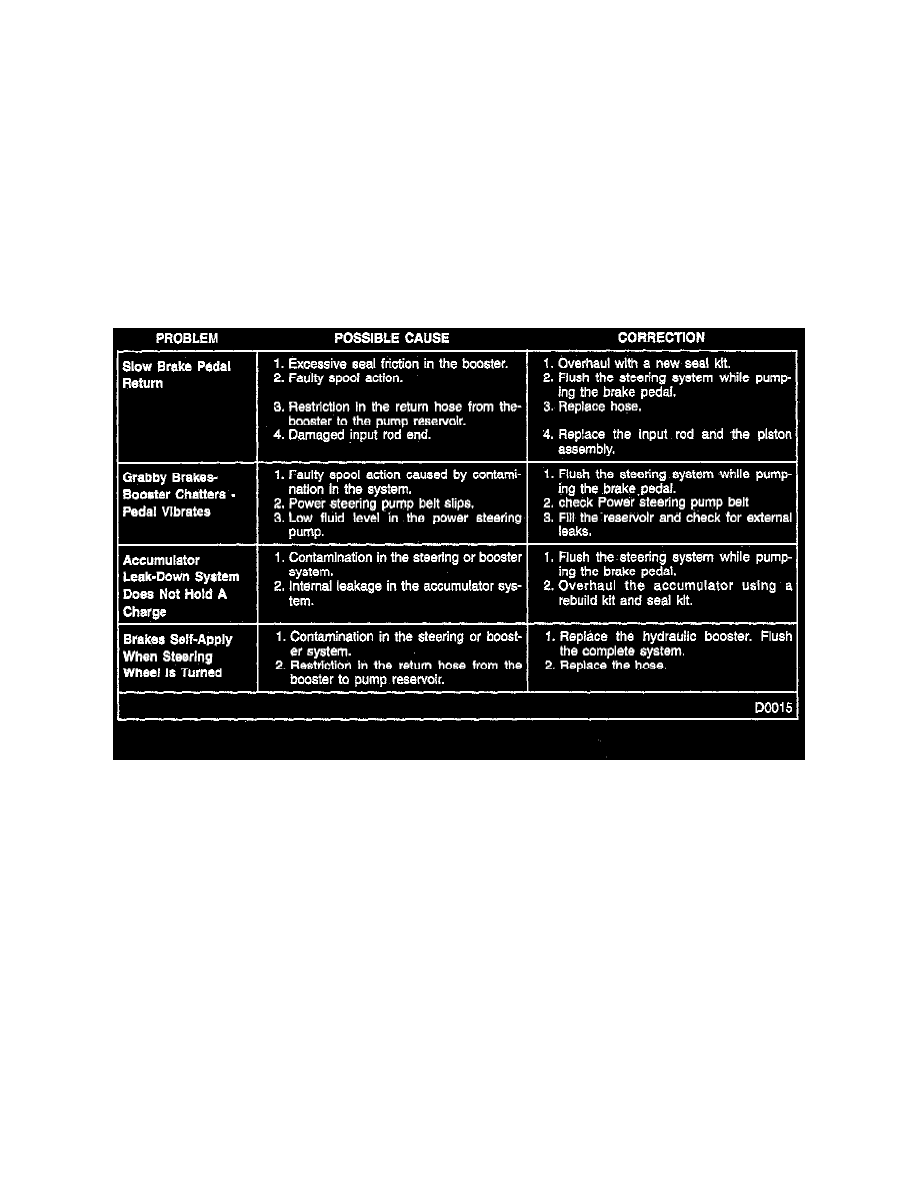G 2500 3/4 Ton Van V8-6.5L DSL Turbo VIN F (1997)

3. A slight hiss may be noticed when the accumulator pressure is used. It is the-sound of the hydraulic fluid escaping through the accumulator
valve. This condition is normal.
4. If the accumulator is empty and the engine is started, another hissing sound may be heard during the first brake application or steering
maneuver. This is caused by fluid rushing through the accumulator charging orifice; It is normal and should only be heard once after the
accumulator is emptied. If this sound continues, even though no apparent accumulator pressure assist was made, it could be an indication that
the accumulator is not holding pressure and should- be checked. Refer to the Accumulator Leakdown Test.
FUNCTIONAL TEST
With the ignition switch in the "OFF" position, apply the brake pedal 30 times to empty the accumulator. Apply the brake pedal using 180 N (40
lbs) of force and start the engine. The pedal should far away and then push back against your foot.
Booster Pipes, Hoses and Fittings
All pipes, hoses and fittings should be inspected for leaks at regular intervals. The fittings must be tight and all clips, clamps and unions supporting the
pipes and hoses must be in place and properly secured. Make sure all hoses and tubes are installed so they do not contact parts of the vehicle that could
cause chafing or wear on the hoses. Check for leaks by wiping the suspected area clean. Leaking fluid can be easily spotted when the suspected area is
clean. When fluid leaks appear, tighten, repair on-replace nearby fittings and bolts.
Brake Pedal Chatter
